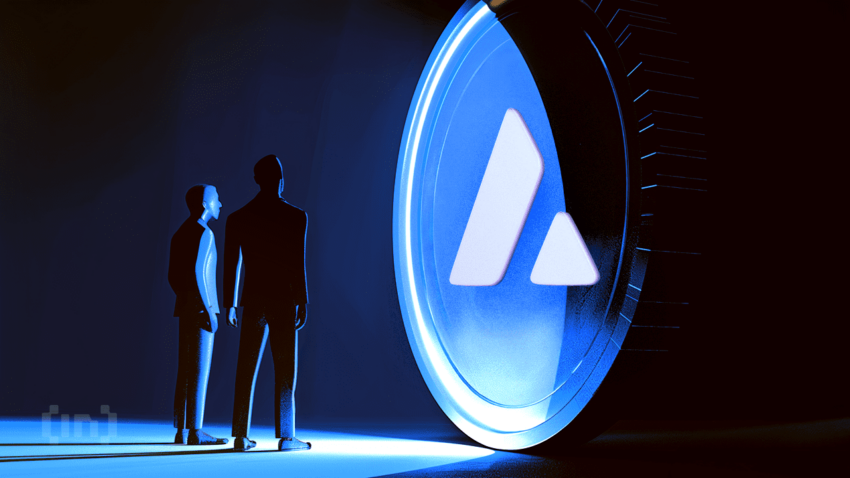Avalanche (AVAX) tackles a key issue in blockchain — slow and expensive transactions. These challenges make it hard for developers and users to get the most out of blockchain technology. Avalanche offers a faster, cheaper solution, setting itself apart in crypto in 2024. Here’s everything you need to know about the network and native AVAX crypto.
KEY TAKEAWAYS
• Avalanche processes up to 4,500 transactions per second, using subnets and proof-of-stake to enhance scalability and efficiency.
• AVAX is critical for staking, transaction fees, subnet creation, and governance within the Avalanche ecosystem.
• Avalanche’s expanding ecosystem, including NFT lending and real-world asset tokenization, positions it as a leading blockchain platform in the web3 space.
What is Avalanche?
Avalanche is a project that attempts to address the fragmented state of the global crypto market. Different countries have their own financial systems and regulations, making it difficult to trade digital assets smoothly.
Avalanche’s goal is to create a unified platform where users can trade digital currencies without the usual complications.
The project uses the proof-of-stake consensus algorithm, which allows it to process transactions quickly while using less energy compared to other networks. Avalanche’s AVA protocol supports fast transactions while enabling users to build decentralized applications (DApps) and create their own networks with the right tools.
The Avalanche network supports various assets, including Ethereum, Bitcoin, and digital collectibles. It also provides peer-to-peer (P2P) lending, a feature that has only recently been introduced to the crypto space.
Did you know? In May 2024, Avalanche introduced NFT and meme coin lending on its C-Chain through Salvor. Users can now use NFTs as collateral to get loans in AVAX, which enhances liquidity and provides advanced financial services within the Avalanche ecosystem. This lending protocol supports over 800 NFT projects and offers benefits like lower interest rates for early repayments.
How does Avalanche work?
Encompassing multiple blockchains, Avalanche processes around 4,500 transactions per second. The advantage of these multiple blockchains and the proof-of-stake system means that Avalanche is much faster than other exchanges and coins.
The Avalanche platform combines previous consensus mechanisms, such as Bitcoin’s Nakamoto consensus and classical consensus. These provide speed and security for users and holders of the AVAX crypto.
With Avalanche’s continuous upgrades, the network has achieved greater scalability, adding support for subnets that enable custom blockchains for specific use cases, thus further enhancing its ecosystem.
The history of Avalanche
Launched in September 2020, the project was started in 2018 in the United States. Despite a few bumps along the way, it saw a surge in developer activity in 2020-21. Avalanche was the brainchild of Emin Gün Sirer, a computer scientist and associate professor at Cornell University.
Emin is also the founder of Ava Labs, where he worked with Kevin Sekniqi and Maofan ‘Ted’ Yin to build the basis for AVAX and the network before its 2020 launch. A precursor to Avalanche was a digital currency called Karma, which preceded even Satoshi Nakamoto’s invention of Bitcoin. This never took off.
In May 2018, Emin’s ideas around virtual currency started to become a reality. An anonymous group published a paper titled “Snowflake to Avalanche,” and the concept of the Avalanche Network was born.
Shortly after this, in June 2018, Ava Labs was founded by Emin and his co-workers. Over the next two years, they would publish a revised version of the original paper, collaborate with Team Rocket, and perform their first testnet launch in April 2020.
A year later, Ava Labs announced the initial coin offering of AVAX, which raised $42 million in under 24 hours. In September of the same year, Avalanche launched its mainnet and began its token release. It is expected that by March 2025, all AVAX coins will be released for public sale.
Missing pieces: In 2022, Avalanche’s growth skyrocketed with the launch of subnets, enabling custom blockchain networks. By 2023, partnerships with major enterprises like Deloitte and continued subnet adoption expanded its ecosystem. In 2024, Avalanche focused on scaling further, introducing enhanced staking options and liquidity through cross-chain NFT lending with Salvor.
In August 2024, Grayscale Investments launched a new AVAX trust, offering investors exposure to Avalanche’s native crypto. This marks a significant step for Avalanche, as Grayscale is one of the largest crypto fund managers globally. The trust is aimed at supporting Avalanche’s growing role in real-world asset (RWA) tokenization, making it easier to tokenize assets like real estate and commodities on-chain.
Features and services

Avalanche offers a wide range of services, including peer-to-peer lending, trading, and the creation of sub-networks (which require AVAX coins). The platform aims to provide a smooth running experience across different financial assets and activities.
- High-speed transactions: Processes 4,500 transactions per second, with near-instant finality.
- Proof-of-stake consensus: Efficient and eco-friendly consensus algorithm.
- Subnets: Custom blockchain networks for specific use cases that offer scalability.
- Cross-chain functionality: Bridges to Ethereum and other blockchains for asset transfers.
- NFT lending: Introduced through the Salvor platform, allowing users to borrow using NFTs as collateral.
- P2P lending: Built-in decentralized lending options.
- Staking: Earn rewards through AVAX staking.
Avalanche has cemented its position as a key player in the blockchain and web3 space. Its network has seen consistent growth, with recent updates like NFT lending, expanded subnet adoption, and high-profile partnerships. In 2024, Avalanche continues to raise significant funding, reinforcing investor confidence. Backers such as Polychain Capital and others show strong conviction in its future. With its solid infrastructure, Avalanche looks primed to compete against big players, such as Ethereum, in the future.
How are competitors faring?
Several competitors have emerged since Avalanche’s launch, each with distinct strengths and challenges.
Despite its partnership with Avalanche, Ethereum remains dominant in crypto but lacks the multi-chain flexibility Avalanche offers. Ethereum 2.0’s upgrade is closing the gap in scalability, yet the larger player still lags in transaction speed.
Algorand has built a reputation for its strong partnerships with institutions, but its singular focus on blockchain limits its versatility compared to Avalanche’s multi-asset approach.
Cosmos continues to thrive with over 250+ DApps and remains a powerful player in web3. However, its broad ecosystem risks becoming cluttered, while Avalanche maintains a more streamlined, finance-oriented model.
Here is a quick table to help you analyze the differences better:
| Parameter | Avalanche | Ethereum | Algorand | Cosmos |
| Transaction speed | ~4,500 TPS | ~30 TPS (ETH 1.0), faster with ETH 2.0 | ~1,000 TPS | ~10,000 TPS |
| Consensus | proof-of-stake (PoS) | proof-of-stake (ETH 2.0) | Pure proof-of-stake | Tendermint BFT |
| Scalability | Subnets for custom chains | Rollups and sharding | Limited | High with IBC (Inter-Blockchain Communication) |
| Focus | Multi-asset, DeFi, and DApps | Smart contracts, DeFi | Institutional use, blockchain | Interoperability, Web 3.0 |
| Ecosystem size | Growing (DeFi, NFTs, DApps) | Largest DeFi ecosystem | Moderate | Large (250+ apps) |
Everything about AVAX
AVAX is the native coin of the Avalanche ecosystem. It plays a crucial role, with holders securing the network through staking, paying transaction fees, and participating in governance. Launched with a capped supply of 720 million, AVAX’s tokenomics are designed to promote scarcity over time, as a proportion of the coins are regularly burned through network activity.
A percentage of AVAX used in fees is burned regularly, reducing the overall supply and creating deflationary pressure. The tokenomics follows the plan to encourage long-term holding and participation in the Avalanche ecosystem.
Currently, a significant portion of AVAX is in circulation, with staking remaining one of its primary utilities. Token holders can lock up their AVAX to secure the network and earn rewards, making it a popular choice for those seeking to participate in the network’s growth.
As of 2024, Avalanche’s subnets and ecosystem expansion, particularly in NFT lending and real-world asset tokenization, have increased the demand for AVAX, which serves as gas for all subnet operations.
Utility of AVAX
AVAX’s utility within the Avalanche ecosystem includes:
- Staking: AVAX holders can stake their tokens to validate transactions and secure the network, earning rewards in return.
- Transaction fees: All operations within the Avalanche ecosystem, such as deploying smart contracts or transferring tokens, incur transaction fees paid in AVAX.
- Subnet creation: Developers need AVAX to create and operate custom blockchains (subnets) on the Avalanche platform.
- Governance: AVAX holders participate in on-chain governance, helping shape the future of the platform through voting on proposals.
Avalanche: Part of the future of finance?
Avalanche’s strength lies in its ability to simplify the movement and trading of diverse asset classes. With its focus on scalability, speed, and interoperability, the network offers practical solutions for developers, investors, and institutions alike. As it continues to grow, Avalanche and the AVAX crypto may very well play a key role in the future of decentralized finance.
Disclaimer: This article is for informational purposes only and should not be considered investment advice.
Frequently asked questions
What is Avalanche?
What does the Avalanche blockchain do?
What is AVAX?
Disclaimer
In line with the Trust Project guidelines, the educational content on this website is offered in good faith and for general information purposes only. BeInCrypto prioritizes providing high-quality information, taking the time to research and create informative content for readers. While partners may reward the company with commissions for placements in articles, these commissions do not influence the unbiased, honest, and helpful content creation process. Any action taken by the reader based on this information is strictly at their own risk. Please note that our Terms and Conditions, Privacy Policy, and Disclaimers have been updated.



